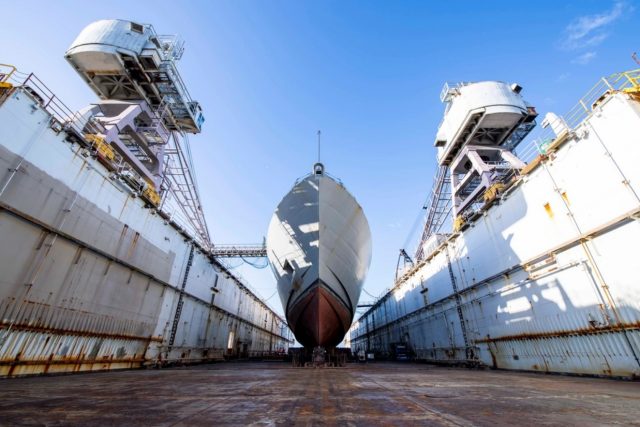
The US Navy has an asset it is not using enough to tackle challenges in meeting its shipbuilding goals it has experienced over the past decade, the Government Accountability Office says.
According to the watchdog, the Supervisors of Shipbuilding, Conversion and Repair (SUPSHIP), which serve as the navy’s on-site technical, contractual, and business authority for the construction of navy vessels at major private shipyards, are responsible for evaluating the construction and business practices of navy shipbuilders. However, they face challenges in improving shipbuilding results.
Despite the efforts of the SUPSHIPs and others to assure construction quality and contract execution, navy shipbuilding results have regularly fallen short of program expectations.
Over the past decade, GAO identified concerns with the business cases for navy shipbuilding programs that have led to persistent cost and schedule growth.
In 2018, the office reviewed shipbuilding work over the prior decade and highlighted problems that shipbuilding programs faced in achieving their cost, schedule, quality, and performance goals. What GAO noted was that programs had an imbalance between the capabilities the Navy sought to acquire and the resources planned to execute the programs.
As a consequence of these conditions, navy shipbuilding programs regularly faced cost and schedule growth before ships were accepted into the fleet. Further, GAO found that cost growth contributed to the erosion of the navy’s buying power over the 10-year period, with ship costs exceeding estimates by over $11 billion during this time frame.
According to GAO findings, lead ships for six navy programs experienced delays in providing the ships to the fleet, ranging from 6 months to 6 years, and cost growth as high as 154 percent.
The office also found that the navy regularly accepts delivery of incomplete ships with significant uncorrected deficiencies. Issues with the quality and readiness of delivered ships can lead to longer-term problems.
Examples of these include persistent propulsion system problems that significantly limit engine power with the Freedom variant of the littoral combat ships (LCS), deficiencies with the CVN 78 aircraft carrier’s 11 advanced weapons elevators, and quality issues with a special treatment not adhering to the hulls of Virginia-class submarines, creating challenges in meeting performance requirements and required costly unanticipated maintenance for the navy.
These results have raised questions about the navy’s ability to effectively oversee shipbuilder performance throughout the construction of new ships.
Congress included a provision in a Senate report for GAO to review the SUPSHIPs’ oversight efforts. GAO examined, among other objectives, the SUPSHIPs’ role in assuring shipbuilding quality and any challenges that limit their ability to help improve shipbuilding program results.
To do this work, the office reviewed federal regulations as well as policy, guidance, and reporting related to the SUPSHIPs’ oversight activities and results. GAO also interviewed DOD and navy officials about shipbuilding oversight and the SUPSHIPs’ role in the execution of shipbuilding programs.
To address these issues, GAO recommended the Navy to take steps to ensure regular use of its quality program standard in shipbuilding contracts, provide the SUPSHIPs with direct representation in evaluation and decision-making processes prior to contract awards, and require the SUPSHIPs to report on the quality and readiness of each ship prior to the Chief of Naval Operations’ approval decisions for ship acceptance.
The navy agreed with all five recommendations, the watchdog said. The full report on the findings is available here


























